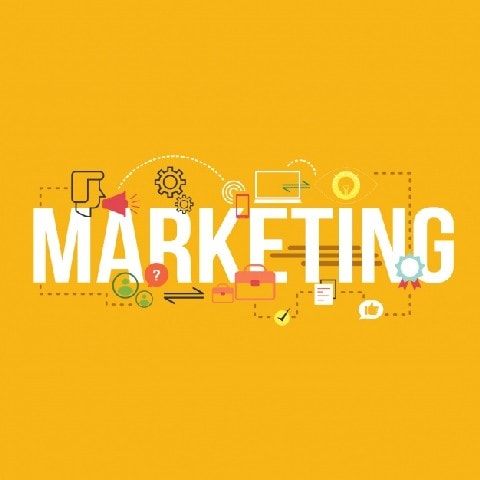Table of Contents
Definition
Functional service strategy can be defined as the everyday strategy which is formulated to help in the application of business and corporate-level strategies. Usually, top-level management provides guidelines to form a functional-level strategy.
A functional level strategy is directly associated with decision making at the operational level, which is also known as tactical decisions. These tactical decisions are used for various functional areas such as marketing, manufacturing, research and development, human resources, finance, logistics, etc.
Functional areas of business
There are many functional areas in companies which mandate a strategic level decision making. These functional level areas are as follows:
1. Marketing
All the activities concerned with the promotion of product or service right from identification of needs to delivery of the product, and it’s after-sales come under marketing. The marketing mix is considered as one of the crucial parts of the marketing strategy, which involves all the steps that an organization can take to increase the demand for the product or service.
The marketing mix includes 4 Ps of marketing which are product, price, place, and promotion. The 7 Ps of marketing have further added people, process and physical evidence to the list. The entire situation of the company should be another is thorough with the help of SWOT analysis so that the marketing strategy can be adequately implemented.
There are many techniques of strategic marketing like augmented marketing, relationship marketing, social marketing, concentrated marketing, guerilla marketing, etc.
2. Financial strategy
The financial strategy covers all the related subsections of Financial management. These include planning, utilizing, acquiring and control of the available financial resources.
The financial strategy includes raising capital for the company, creating and implementing annual budgets, sourcing and utilization of relevant funds for investments, management of available working capital and profit utilization, payment of dividends to shareholders and other related financial functions.
3. Human Resource Strategy
The human resource strategy is concerned with the working of employees in the organization. They provide them with good and healthy working conditions so that they contribute to the success of the organization.
This is at best employees for a particular job, and they expect the same output from employees. The Human Resource department manages many activities of human resources like recruitment, personal development, the motivation of the employees, salary management, retention of the employees.
4. Production Strategy
As the name suggests, the production strategies related to the manufacturing of products. The production strategy focuses on the overall production of the organization, including its operations control, logistics and also ancillary functions.
The primary purpose of the Production Strategy is to improve the quality of the product and also reduce the manufacturing cost.
5. Research strategy
The strategy is focused on innovation. Development and improvement are the primary objectives of research and development strategy. The RND is encouraged to develop innovative products so that the company can lead in the market.
This also helps the company to get an edge over the competition. The company increases with diversified products and gets a better market penetration with the available product line.
Implementation of functional strategy
The functional strategy is concerned with the improvement of specific departments. Departments like purchase and material management should improve the quality of the purchase and reduces the purchasing cost so that the overall profit margin has increased. It is also concerned with production and operation strategies which are concerned with marketing concepts and improving products.
The objective of the functional strategy is also to understand how they can perform better. The problem is analyzed at a micro level so that it is solved and it does not cause a glitch in the overall functioning of the organization. This is where functional strategy is helpful since the respective departments can be asked to improve.
Here is a video by Marketing91 on Functional Level Strategy.
Variables of Functional Level Strategy
1. Detail
The functional strategy is supposed to be in detail so that you can have items on which action can be taken and specific as well as measurable goals for every department. This works both ways because then you will also have specific parameters by which you can measure the productivity of every department.
2. Alignment
The vision and the mission of the business should always be in alignment with the functional level strategies. For example, if your idea is to become the number-one manufacturer of electronic items, then you cannot have your functional strategy as launching the product after competitors start it.
You have to be aggressive as an organization to promote yourself and gain market share. This is why it is essential to align with the vision and mission of the business.
3. Progress
It is imperative to measure progress at every step to understand the productivity of every department. However, too much data would not work with a functional level strategy.
4. Existing resources
Every functional strategy will do the utilization of existing resources. It will be right in the case of both the workforce as well as equipment. Functional level strategy cannot be based on something that you do not have because doing so can undermine your functional strategy. You can have your functional strategy based only on the departments and functions that you have.
5. Integration
It is imperative to integrate functional level strategy is among departments. Coordinating the marketing and sales department is one of the common examples in which functional level strategy is can be correlated with each other. Similar is the production and purchase department can be related.
Examples of functional strategy
1. Marketing
- Efficiency – Reducing the overall cost of marketing
- Quality – Improving the accuracy of customer and need assessment in market
- Delivery – timely reaction to changing market and customer needs
2. Human Resources
- Efficiency – Reduction in the expenditure of the onboarding employee process.
- Quality – Minimize the employer by providing extensive technical training
- Delivery – to conduct and regularise hiring and training of employees
3. Operations
- Efficiency – minimize wastage of products
- Quality – Improvement in overall production quality
- Delivery – Reduce delay in demands
4. Purchase department
- Efficiency – to negotiate the best price while purchasing
- Quality – to appoint vendors and train them to become partners
- Delivery – Avoiding extensive delivery and managing existing deliveries.
Liked this post? Check out the complete series on Strategy

